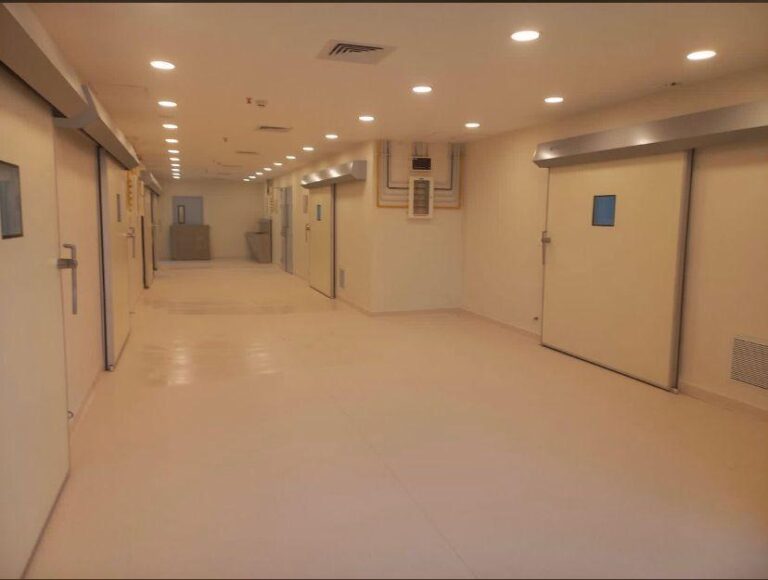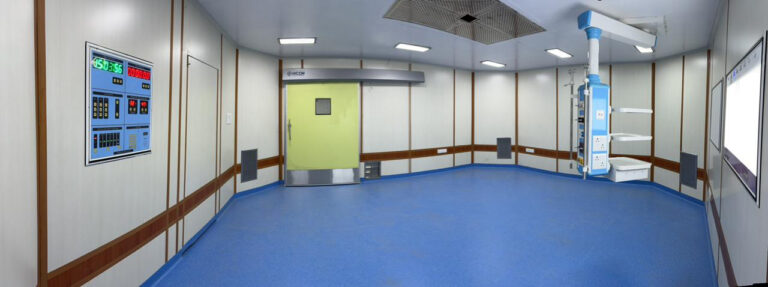Clean rooms are critical environments in pharmaceutical facilities, where sterility, precision, and controlled conditions are vital for ensuring product quality and safety. One of the key components in maintaining these strict conditions is the pharmaceutical clean room door. Selecting the right door for these spaces is essential to ensure the cleanliness, security, and efficiency of your operations. In this blog, we will guide you through the key factors to consider when choosing the ideal clean room door for your pharmaceutical facility.
1. Material and Build Quality
The first thing to consider when selecting a pharmaceutical clean room door is the material. Clean room doors must be made of high-quality, durable materials that are resistant to contamination and can withstand frequent cleaning without compromising their integrity. Materials like stainless steel, aluminum, and other non-porous surfaces are commonly used for their resistance to corrosion, stains, and microbial growth.
Stainless steel is particularly popular in pharmaceutical environments due to its durability, smooth finish, and ease of maintenance. The door should also feature a seamless construction to minimize dirt or bacteria accumulation in the joints, which is essential for maintaining the required level of cleanliness in the facility.
2. Sealing and Containment Features
Pharmaceutical clean rooms require a high level of containment to ensure that external contaminants do not enter the controlled environment. The pharmaceutical clean room door you select should have tight, secure seals around the edges to prevent the infiltration of dust, dirt, or microbes from the outside.
Look for doors with features such as double seals or gasket systems that ensure a tight seal when the door is closed. This prevents leaks of air or contaminants, maintaining the proper pressure and cleanliness inside the clean room. Additionally, the door should be capable of maintaining the necessary pressure differential, especially in rooms with high-precision requirements, such as sterile or aseptic environments.
3. Hygienic Design
The design of the clean room door should promote easy cleaning and maintenance. Smooth surfaces are crucial because they reduce the risk of contamination and simplify sanitation processes. Doors with minimal crevices or gaps are ideal since bacteria and dust can collect in those areas. A hygienic design will help ensure that your pharmaceutical facility meets the highest standards of cleanliness.
Furthermore, the door hardware, such as hinges and handles, should be designed in a way that they can be cleaned without difficulty and should be resistant to the buildup of dirt or bacterial growth. Doors with a simple, flush-mounted handle design are often preferred for this reason.
4. Automation and Control
In modern pharmaceutical facilities, automation plays a significant role in improving efficiency and maintaining a high level of hygiene. Pharmaceutical clean room doors with automated systems, such as motorized sliding doors or doors with sensor-operated opening mechanisms, can greatly enhance workflow while reducing human contact with the door.
Automated doors also help in controlling the frequency and duration of door openings, minimizing the introduction of contaminants each time the door is opened. This level of control is particularly important in facilities that require frequent access while maintaining the integrity of the clean room environment.
5. Compliance with Industry Standards
Another crucial factor to consider is compliance with industry standards and regulations. Pharmaceutical clean rooms must adhere to stringent guidelines, such as those set by the FDA, GMP (Good Manufacturing Practices), and ISO 14644 for clean room classification. When choosing a pharmaceutical clean room door, ensure that it meets all the necessary standards for performance, safety, and hygiene. The door should be designed and manufactured to prevent contamination and ensure safe operation within the regulatory framework.
Make sure to work with a supplier that offers doors specifically designed for pharmaceutical applications, ensuring full compliance with all the necessary certifications.
6. Size and Customization
Clean room doors are not a one-size-fits-all solution. Depending on your facility’s specific requirements, you may need doors of various sizes, from smaller single-person doors to large access doors for equipment or material transfer. When selecting a pharmaceutical clean room door, consider the type of access needed, the flow of personnel and materials, and the frequency of use.
Customizable doors are a great option, allowing you to tailor the design, size, and features to your exact specifications. Work with a manufacturer who offers customization options to ensure the door fits seamlessly into your facility’s layout and workflow.
7. Durability and Long-Term Performance
Finally, consider the durability and long-term performance of the door. Pharmaceutical clean rooms require doors that can withstand constant use without losing their effectiveness or compromising the cleanliness of the environment. Choose a door that is engineered for long-term reliability, easy maintenance, and replacement of parts as necessary.
A well-built pharmaceutical clean room door should also offer long-term cost savings by reducing maintenance and replacement costs over time.
Conclusion
Choosing the right pharmaceutical clean room door is essential for maintaining the integrity of your clean room environment, ensuring compliance with regulations, and improving the overall efficiency of your pharmaceutical facility. By focusing on material quality, sealing features, hygienic design, automation, industry compliance, and durability, you can select a door that meets your specific needs and upholds the highest standards of cleanliness and safety.
Partnering with a reliable supplier like HIKOM International LLP ensures that you get doors designed specifically for pharmaceutical applications, giving you peace of mind and supporting the overall success of your facility.


